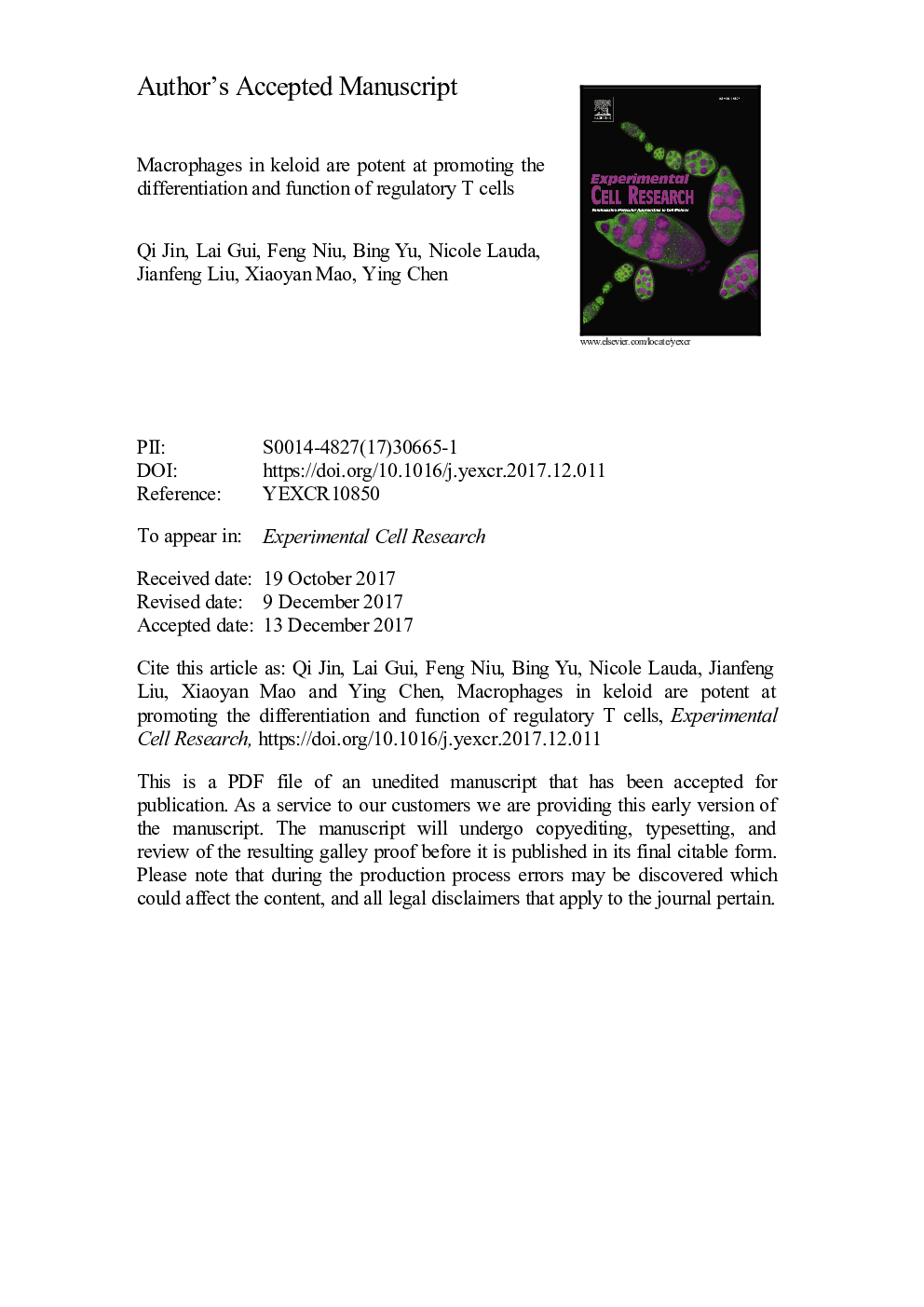| Article ID | Journal | Published Year | Pages | File Type |
|---|---|---|---|---|
| 8451704 | Experimental Cell Research | 2018 | 22 Pages |
Abstract
The mechanistic details of keloid formation are still not understood. Given that the immune system is engaged in skin lesion repair, we examined the CD14+ macrophages and CD3+ T cells in keloid tissues and in the normal skin. Compared to the normal skin, keloid tissues presented significantly elevated infiltration by CD14+ macrophages. Moreover, the transcription and protein expression of iNOS, IL-12, IL-10, and TGF-β were significantly higher in keloid macrophages than in normal skin macrophages, in which the expression of M2-associated genes were further elevated compared to M1-associated genes in keloid. We also observed that keloid tissues presented higher infiltration by CD3+ T cells, of which the majority was CD4+ T cells. Notably, the frequency of Foxp3+ regulatory T cells (Tregs) in keloid tissues was significantly higher compared to that in the peripheral blood. Furthermore, macrophages from keloid tissues possessed potent capacity to induce Foxp3 expression in circulating CD3+ T cells. Together, this study suggested that macrophages in keloid tissues presented high activation status and were polarized toward the M2 subtype; moreover, these macrophages could promote Treg differentiation by upregulating Foxp3 expression.
Keywords
Related Topics
Life Sciences
Biochemistry, Genetics and Molecular Biology
Cancer Research
Authors
Qi Jin, Lai Gui, Feng Niu, Bing Yu, Nicole Lauda, Jianfeng Liu, Xiaoyan Mao, Ying Chen,
